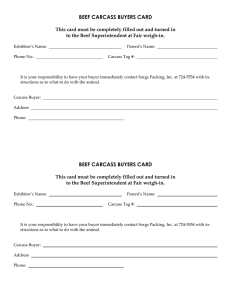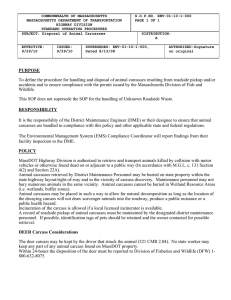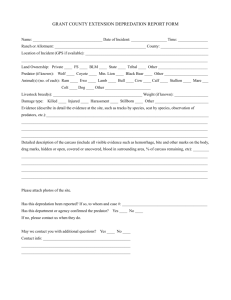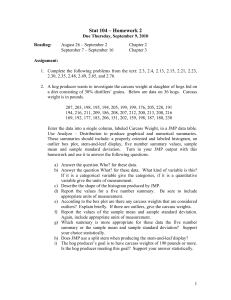Beef Carcass Evaluation Guide
advertisement
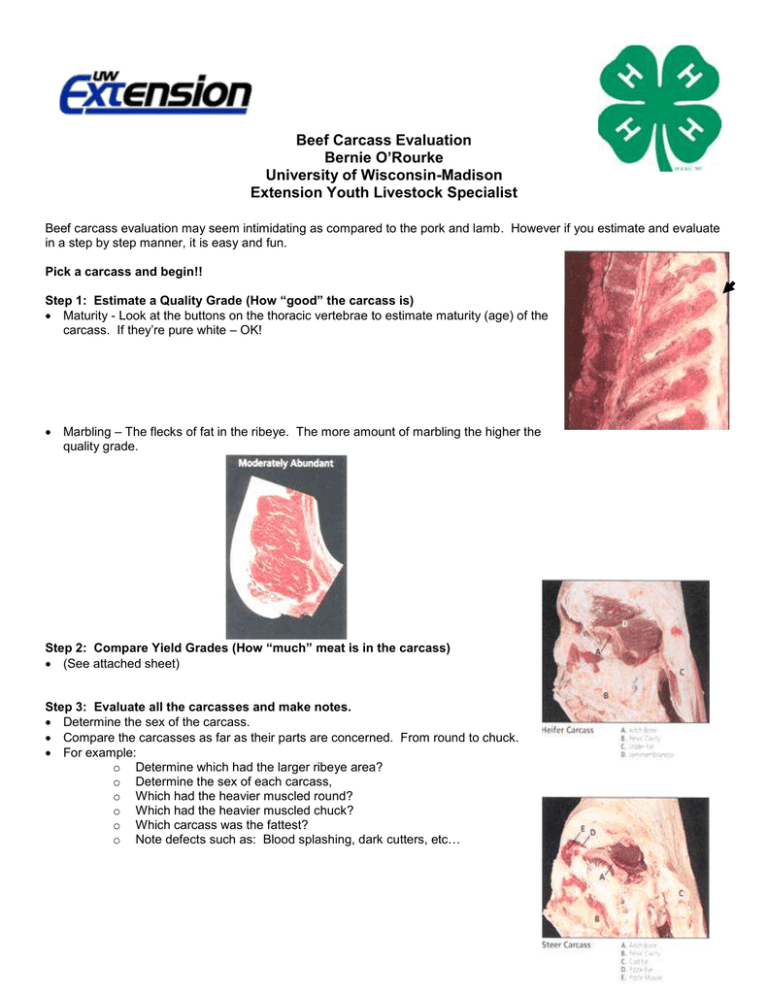
Beef Carcass Evaluation Bernie O’Rourke University of Wisconsin-Madison Extension Youth Livestock Specialist Beef carcass evaluation may seem intimidating as compared to the pork and lamb. However if you estimate and evaluate in a step by step manner, it is easy and fun. Pick a carcass and begin!! Step 1: Estimate a Quality Grade (How “good” the carcass is) Maturity - Look at the buttons on the thoracic vertebrae to estimate maturity (age) of the carcass. If they’re pure white – OK! Marbling – The flecks of fat in the ribeye. The more amount of marbling the higher the quality grade. Step 2: Compare Yield Grades (How “much” meat is in the carcass) (See attached sheet) Step 3: Evaluate all the carcasses and make notes. Determine the sex of the carcass. Compare the carcasses as far as their parts are concerned. From round to chuck. For example: o Determine which had the larger ribeye area? o Determine the sex of each carcass, o Which had the heavier muscled round? o Which had the heavier muscled chuck? o Which carcass was the fattest? o Note defects such as: Blood splashing, dark cutters, etc… Step 4: Place the class based on the Quality and Yield Grade observations. (Make notes for reasons and questions if so noted.) Rule of Thumb: Carcasses that achieve a quality grade of Choice average or higher with a desirable yield grade (Yield grade 3 or better) have considerable value and usually place high in a judging class. When yield grades are fairly similar, Choice carcasses should always place over Select or Standard carcasses. If yield grades are fairly similar (within 0.8 yield grade), a Prime carcass would place over a Choice carcass. However, a Select carcass which is one yield grade better than a Choice carcass, would rank over the Choice carcass. The same would be true for yield grade differences between Choice and Prime carcass pairs. Sample Beef Carcass Questions: 1. Which carcass had the most desirable yield grade? 2. Which carcass had the least desirable quality grade? 3. Between carcasses 1 and 2 which had the larger rib eye area? 4. True or False: All carcasses were heifer carcasses. 5. Which carcass had the heavier muscled, plumper cushioned round? Carcass Ranges: Carcass Weight, pounds Fat thickness, 12-13th rib, inches Ribeye area, square inches Kidney, pelvic, heart fat (KPH), % Yield Grade Quality Grade Average 800 0.5 12.5 2.0 3.0 Se- - Ch° Range 630 - 1000 0.1 – 1.0 9.5 - 17 1.0 - 4.0 1.0 – 5.0 Ch- University of Wisconsin-Madison provides equal opportunities for admission and employment.

